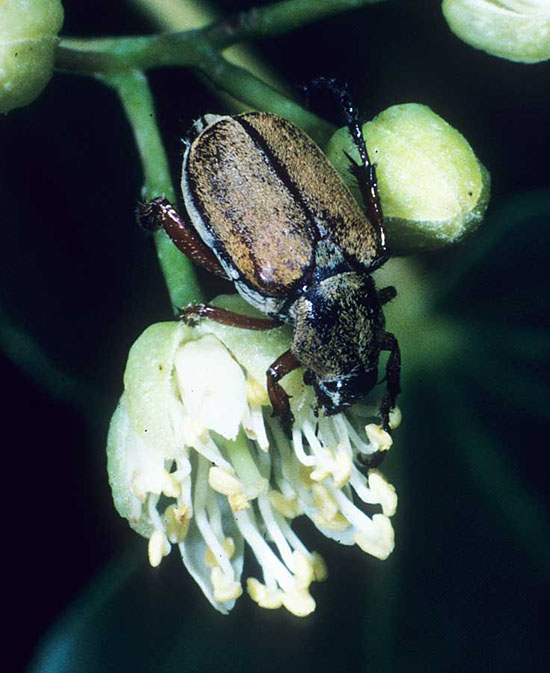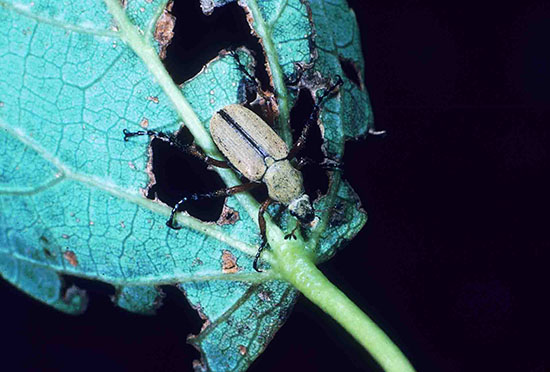Issue 7, June 12, 2017
Rose Chafer
Rose chafer adults have emerged in Illinois, although damaging numbers are unlikely except in areas with sandy soils such as the Kankakee, Will, and Mason County areas. Adults live for about one month. They contain a heart toxin that can kill birds and mammals that eat them.
Rose chafer adults are five-sixteenths to one-half inch long beetles with long, orange legs. The thorax and elytra (wing covers) are light green, brown or gray. They feed heavily on the blossoms of rose, peony, and linden. Rose chafer adults also feed on the leaves of grape, Virginia creeper, birch, crabapple, linden, and other trees and shrubs, causing skeletonizing damage by eating the leaf lamina but leaving the veins behind. They eat the fruit of grape, strawberry, and raspberry.
After feeding and mating, females tunnel into sandy soil to lay their eggs. The eggs hatch into white grubs that feed on the roots of grasses and other plants without causing obvious damage. The grubs overwinter in the soil, feeding for a short time in spring before pupating. Mature grubs are whitish, about three-fourths inch long, and have six legs. Adults emerge in late May and June.

Rose chafer adult feeding on linden flower.

Rose chafer on linden leaves.
Adults are so busy feeding and mating that they are easily hand-picked and killed in a jar containing rubbing alcohol or soapy water. One to two sprays of carbaryl (Sevin), bifenthrin (Onyx), cyfluthrin (Tempo), permethrin (Astro), or other labeled insecticide are effective. Be careful not to spray blossoms to avoid damaging pollinators. (Phil Nixon)
Author:
Phil Nixon